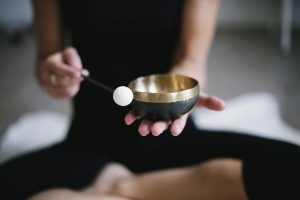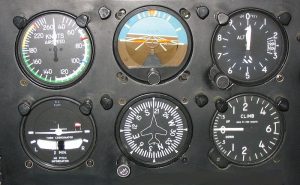It was a lovely, sunny, summer day, and there I was beating myself up a bit for slacking on my meditation practice. Then my 7-year old granddaughter Anna rushed up and tugged at my arm.
“Come on, Grandma. Come out and play with me!”

“Look! Let’s get a bowl.”
Together, we went back to the house to fetch the bright turquoise bowl we would soon fill with fresh, plump peas. As we later sat together in the sun, picking and shelling our little harvest, Anna smiled and said, “Aren’t they beautiful?”
Yes, they were.
What Is the “Goal” of Mindfulness?
That moment made me think a lot about the “goal” of mindfulness practices. What is it, exactly, are we seeking to accomplish?

For as much as our society seems to privilege going your own way and doing your own thing – “you do you,” as they say – it’s easy for us to get caught up in prescriptive behaviors and rule-riddled practices that may not actually harmonize with our own being. We may feel there is one correct way to do yoga, to do mindfulness, to meditate – and if we struggle with that, then the fault is our own.
But mindfulness is not necessarily a rule-driven process, some 1-2-3 set of procedures you have to follow in order to reap its benefits.
Mindfulness is a state of simply being in the moment and accepting what it gives without judgment. It’s being where we are, when we are, so we can be prepared to respond appropriately to that reality.
The Many Ways of Mindfulness
Understood in this way, we can observe mindfulness across the whole gamut of human activity, not just formal meditative practices.

And to hear him tell it, the five-year process of building that plane was just as empowering as the moment when he first took flight.
In Carl, I see a teacher of mindfulness, just as I do in my musician friends when they deliciously play note after note, absorbed in the ease of play that comes from years of practice. I see it in the teachers I work with, who stay present to every scraped knee, every homework assignment, every parent meeting.
I think they know a thing or two or ten about mindfulness.
Let’s Get Real
There are so many ways to practice. All are an expression of authenticity. When we are open and present to the experience before us, we are moved to respond with our truest self.
Authenticity is a key to real human connection.
More: Mindfulness Truly Blooms in Community
Flight panel image by Meggar, via Wikimedia Commons


